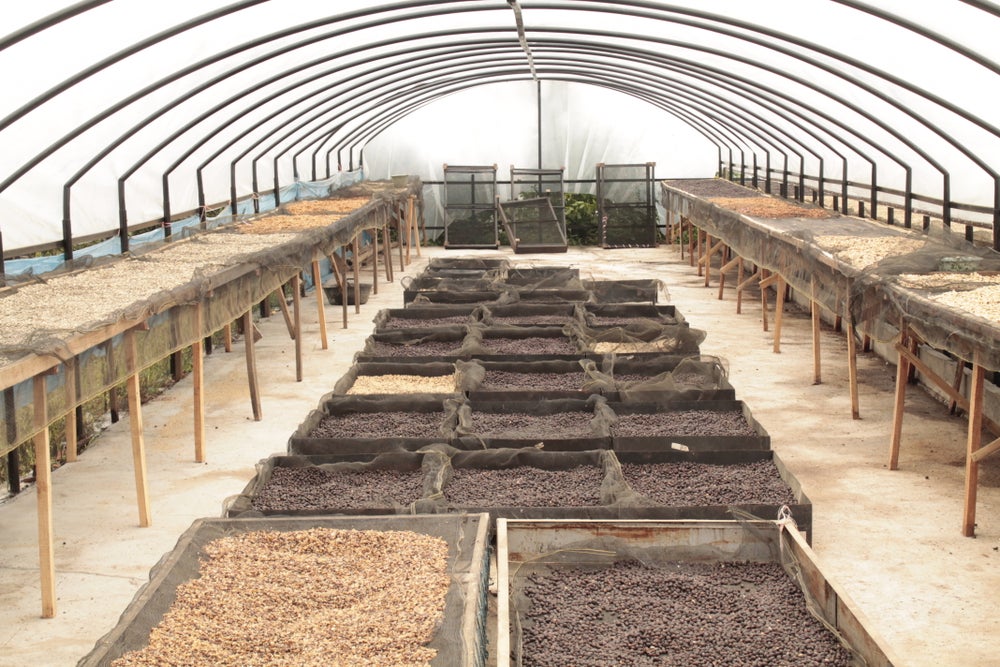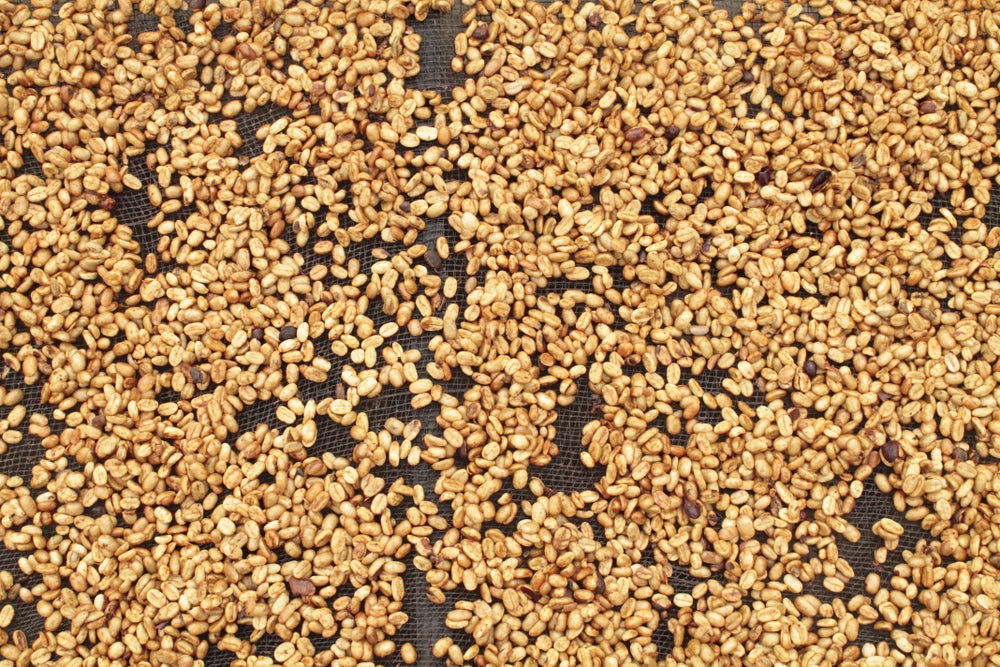About This Coffee
This coffee contributes to a Farmgate Initiative project. Learn more.
The 320 members of the Koerintji Barokah Bersama Cooperative live and farm on a plateau that sits at the foot of Mount Kerinci on the island of Sumatra. Mount Kerinci is one of the many volcanoes in the Pacific Ring of Fire, a 40,000-kilometer horseshoe-shaped series of 452 volcanoes that are part of an almost constant dance of eruptions and plate movements. Mount Kerinci’s historic eruptions have assured that the surrounding area is lush and verdant with a deep supply of fertile volcanic soil.
The cooperative is managed by Triyono, who leads members in processing and roasting their own coffees. They have a fully outfitted roasting facility, including a cupping lab that's next to the dry mill. This is especially impressive considering the cooperative was founded in mid-2017!
Cultivation
Almost all farms on Sumatra are small. On average, farms are between 0.5 to 2.5 hectares. Coffee is usually the primary cash crop for farmers, but most also intercrop their trees alongside vegetables, potatoes and fruit. This intercropped produce will make up a substantial part of the family’s diet for the year.
In addition to growing coffee as a cash crop, many smallholder farmers also work as hired laborers at nearby tea plantations. Like coffee, tea is a huge cash crop in the area. The bigger tea plantations are often near coffee farms. When the coffee harvest is finished, coffee farmers will go there and pick leaves under contracted labor.
There are more and more initiatives by farmers on Sumatra to organize themselves into cooperatives. In the past, farmers did not have much leverage to get better prices for their cherry or parchment. In cooperatives, they can share resources, organize training and negotiate better prices.
Harvest & Post-Harvest
During the harvest season, coffee is handpicked. Usually, most labor is supplied by the immediate family.
After picking, the coffee will be delivered to a UPH collection center. A UPH is a collection center where coffee cherries are purchased by the cooperative and where the coffee is processed before moving it to the central mill. Essentially, a UPH functions as a small washing station. Triyono oversees the activities on and around nine UPH stations owned by the cooperative.
To streamline the operation, there is an agriculturalist providing technical assistance to make sure the same, standard procedures are used to process cherry at each of the different stations. Each UPH is located in a different area and receives cherries from different farmer groups.
Indonesia is known for its unique ‘Wet Hulled’ Process (Giling Basah). Tryiono and his team are expanding Indonesia’s coffee processing traditions. With this Honey lot, the coffee is pulped without using water and is then moved directly to dry on raised beds. The beds are located in domes to protect the coffee from rain or harsh sunlight. The parchment will dry here for around 20 days. When dry, the coffee is milled and sorted by hand.
Members of the coop have a fixed buyer for their cherries, and at the end of the year, the coop invests its profits in either infrastructure to increase quality or shares them as quality premiums with the member producers.
Farmers also receive technical support and seedlings for shade trees to plant on and around their farms.
Sucafina in Indonesia
Sucafina has established offices and quality labs in Indonesia that are staffed by an experienced team who manage our activities across this vast and diverse island nation. We partner with farmers, cooperatives, collectors, mills, and exporters from many producing islands including Sulawesi, Flores, Bali, Java and Sumatra. We work to identify the best producers across Indonesia and support their ability to improve quality, increase capacity and access the market.
We regularly travel to visit partner producers. Visits are essential to maintaining and strengthening the relationships that are integral to our communal success. Visits help us gather accurate, up to date information on harvest and post-harvest timing and practices. We also use this time with producers to help identify challenges they are facing and determine where we can help them work towards sustainable, affordable solutions. Our local team oversees logistics to ensure that coffee moves safely and efficiently from farm to mill to port, and on to you. With comprehensive quality control at multiple stages of the supply chain, we ensure the integrity of each shipment and work continuously on quality improvement.
Indonesia has an impressive diversity of coffees to offer and the industry continues to evolve and change. Whether you’re looking for consistent deliveries of the classic wet-hulled profile from North Sumatra or Aceh, the clean washed coffees from Flores or Sulawesi, or experimental micro-lots from the new generation of producers emerging around the archipelago, the team at Sucafina Indonesia is ready to help.
Coffee in Indonesia
Indonesia has a long coffee producing history, but recently their coffees have been overlooked by the specialty market. Thanks to our innovative and ever-expanding supply chain, we are proud to bring you high-quality coffees from many of Indonesia’s unique regions, accompanied by in-depth traceability information.
Indonesia is perhaps best known for its unique wet hulling process (giling basah). Though its exact origins are unclear, wet hulling most likely originated in Aceh during the late 1970s.
Wet hulling’s popularity can be attributed to producers’ need for prompt payments. It was also adopted specifically by many producers who lacked the drying infrastructure that was needed to shelter drying parchment from the high humidity and inconsistent rainfall typical in Sumatra. At higher elevations with constant humidity and unpredictable rainfall, drying can prove to be slow, risky and difficult.

